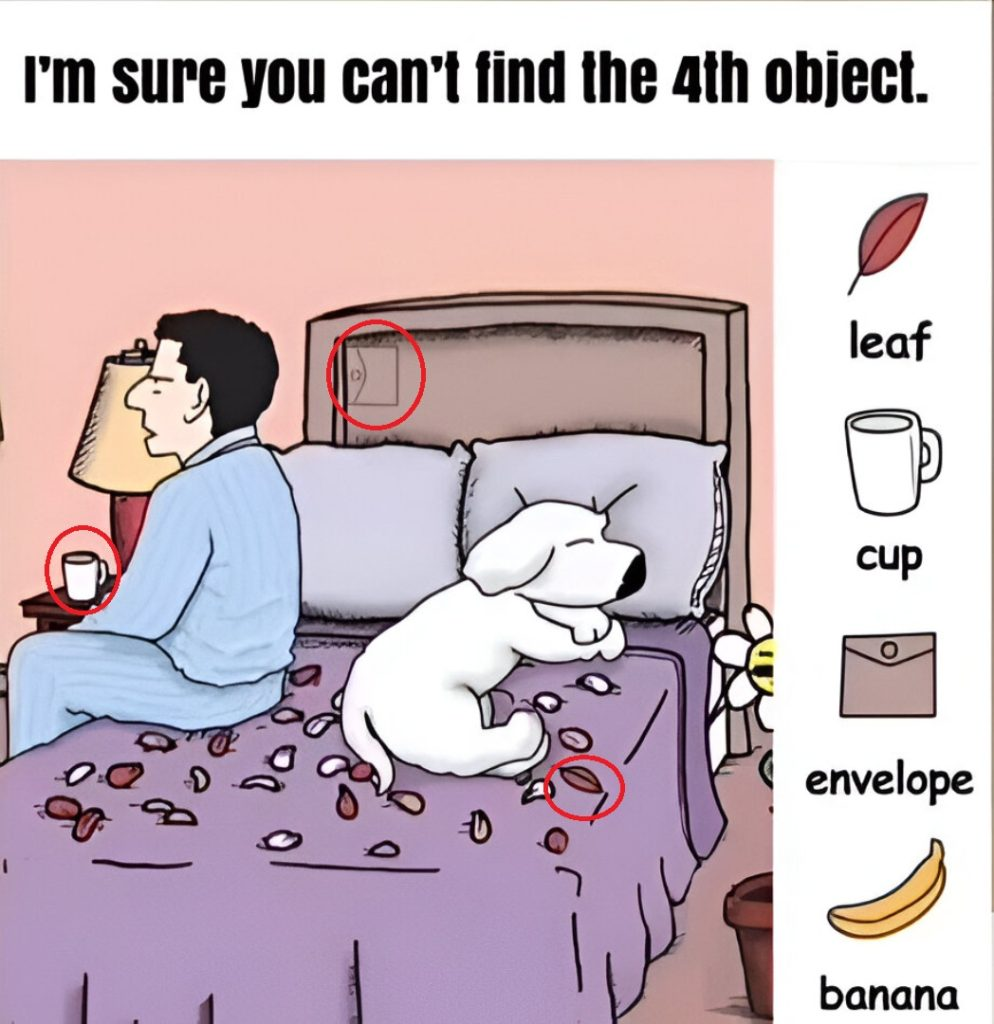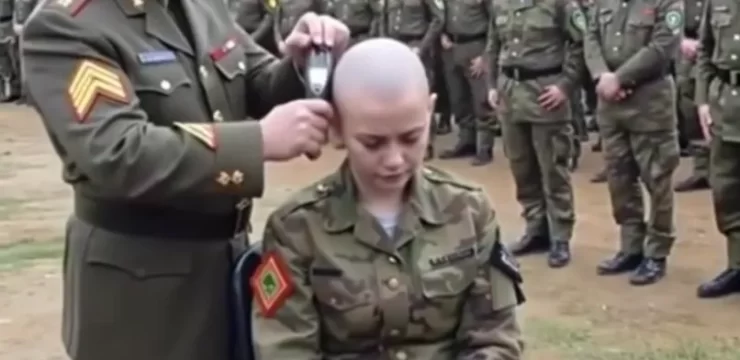Hidden object puzzles have a way of drawing you in, teasing your mind with something that appears simple at first but quickly turns into a test of focus, patience, and determination. The challenge might seem straightforward—you’re told to find everyday items cleverly tucked into a busy picture—but once you begin searching, you realize just how tricky it can be.

Today’s puzzle puts you to the test by asking you to find four familiar objects: a leaf, a cup, an envelope, and a banana. On paper, those items don’t sound difficult to spot, yet when hidden in plain sight, they become almost invisible. The key to success lies not only in your eyesight but in how you use your brain to process patterns, shapes, and distractions. Many people fall into the same traps when trying to solve puzzles like these, and the first and most common mistake is rushing. Our brains are wired to process visuals quickly, but speed often causes us to overlook subtle details. What looks like a random shadow could actually be the curved edge of the banana, and what appears to be part of a background pattern may actually be the flap of an envelope. Skimming through an image might feel efficient, but more often than not, it causes people to miss what’s right in front of them.
Another mistake is focusing only on the obvious spots. Bright colors and bold shapes naturally capture attention, so we’re drawn to them first. Puzzle designers know this and often place hidden objects in less noticeable areas, blending them into muted tones or disguising them as part of other elements. Our eyes are trained to go for the high-contrast details, but the real answers usually lie where we don’t expect to look. The final pitfall is impatience. Many people assume that if they don’t spot the objects within a minute, the puzzle must be impossible or unfair. In reality, patience and persistence are the most important tools for solving these visual challenges.
By slowing down and methodically scanning each section, you begin to see through the disguises that once tricked you. Let’s walk through the placement of the four hidden objects to see how they were disguised. The leaf is positioned near the dog’s tail on the right side of the picture. It blends perfectly with the petals of the bedspread, borrowing the same shades of green and curved lines, but if you look closely, you’ll notice its distinct texture that separates it from the floral design. The cup is easier to find once you shift your focus. Sitting on the nightstand to the left of the man on the bed, its white surface stands out against the darker tones of the background. It’s one of those items that seems impossible to miss once you’ve spotted it, but until then, your eyes tend to skip right over it. The envelope is cleverly hidden on the headboard of the bed, just above the pillows on the left side.
At first glance, it looks like a rectangular detail in the design of the frame, but if you pay attention, the faint lines and the flap give it away. It’s a perfect example of how puzzle creators use context to disguise something familiar. Finally, the banana is the most challenging item of all. Positioned to the right of the flower pot, its curved form has been toned down in color to mimic part of the flower’s stem. Unless you look carefully at the shape and separate it from the plant, your brain simply blends it into the background. The reason these puzzles fool us has everything to do with how our minds process visual input. We’re naturally programmed to look for patterns and group similar shapes and colors together, which is why the leaf vanishes among petals and the banana disappears into the stem.
Instead of signaling that something doesn’t belong, our brains file it away as part of the whole picture. The trick to solving hidden object puzzles is to break that instinct by questioning what you see and looking for subtle inconsistencies. Practicing these puzzles regularly can sharpen more than just your observation skills. They teach patience, improve focus, and build problem-solving abilities that translate into everyday life. Whether you’re scanning documents for errors, keeping track of details in a busy schedule, or even noticing something unusual during your commute, the skills you hone in puzzles like these carry over into the real world. So, did you find all four? For many people, the banana proves to be the toughest, but every player has a different experience. Some might spot the envelope immediately while missing the cup, and others might catch the leaf right away but struggle with the headboard.

Sharing your experience with others can make the challenge even more rewarding, as it reveals how differently our eyes and brains approach the same problem. If you enjoyed this challenge, don’t stop here. Keep practicing hidden object puzzles whenever you have a few minutes to spare. They’re a fun way to reset your mind, take a break from stress, and exercise your brain. The sense of satisfaction you get when you finally spot the object you’ve been searching for is worth the effort, and over time, you’ll find that you notice details you used to miss.
Whether it’s the leaf camouflaged against petals, the cup blending with the furniture, the envelope disguised in the headboard, or the banana pretending to be part of a plant, puzzles like this prove one important point: the answers are often right in front of you, waiting to be seen if only you’re willing to look closely enough.





